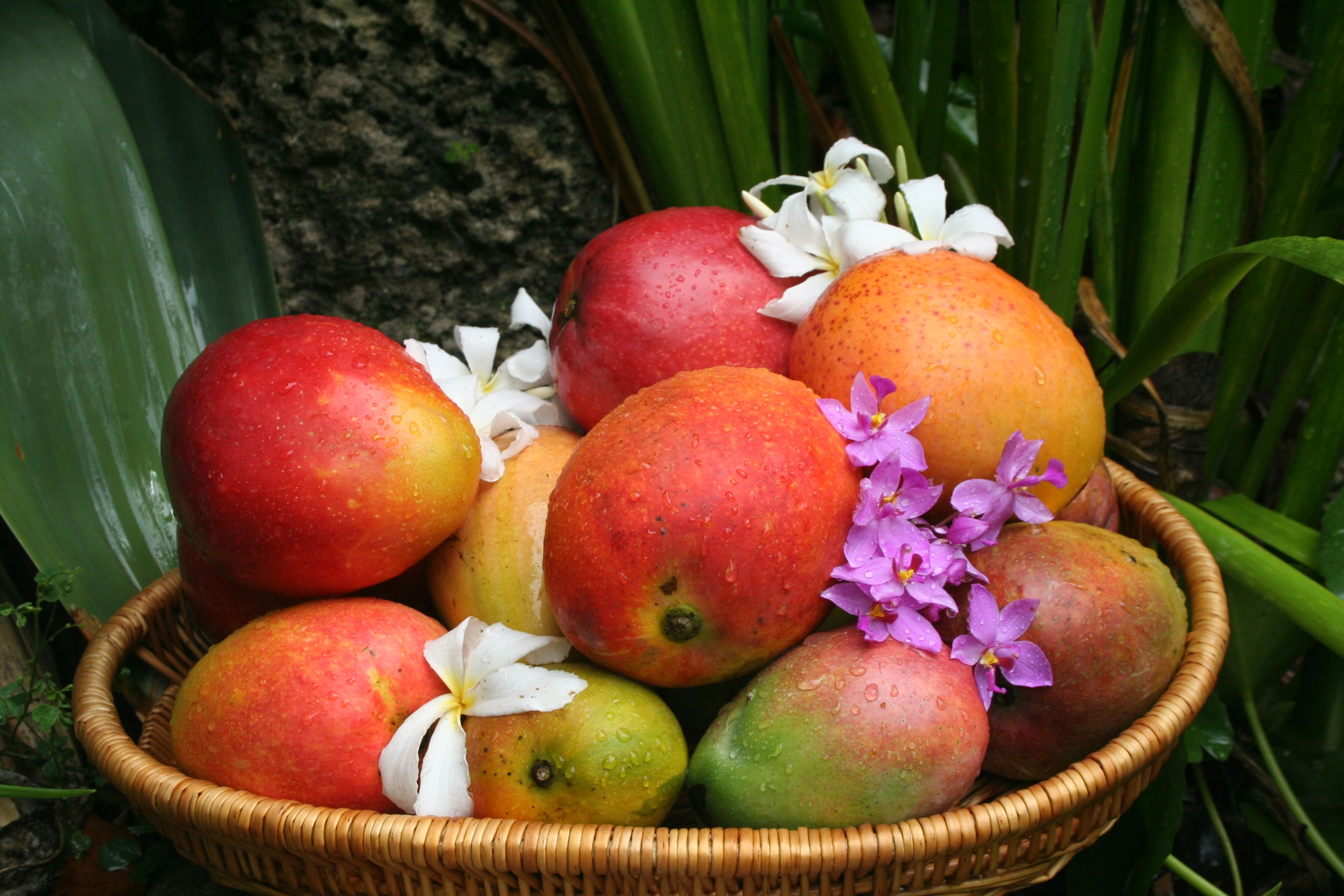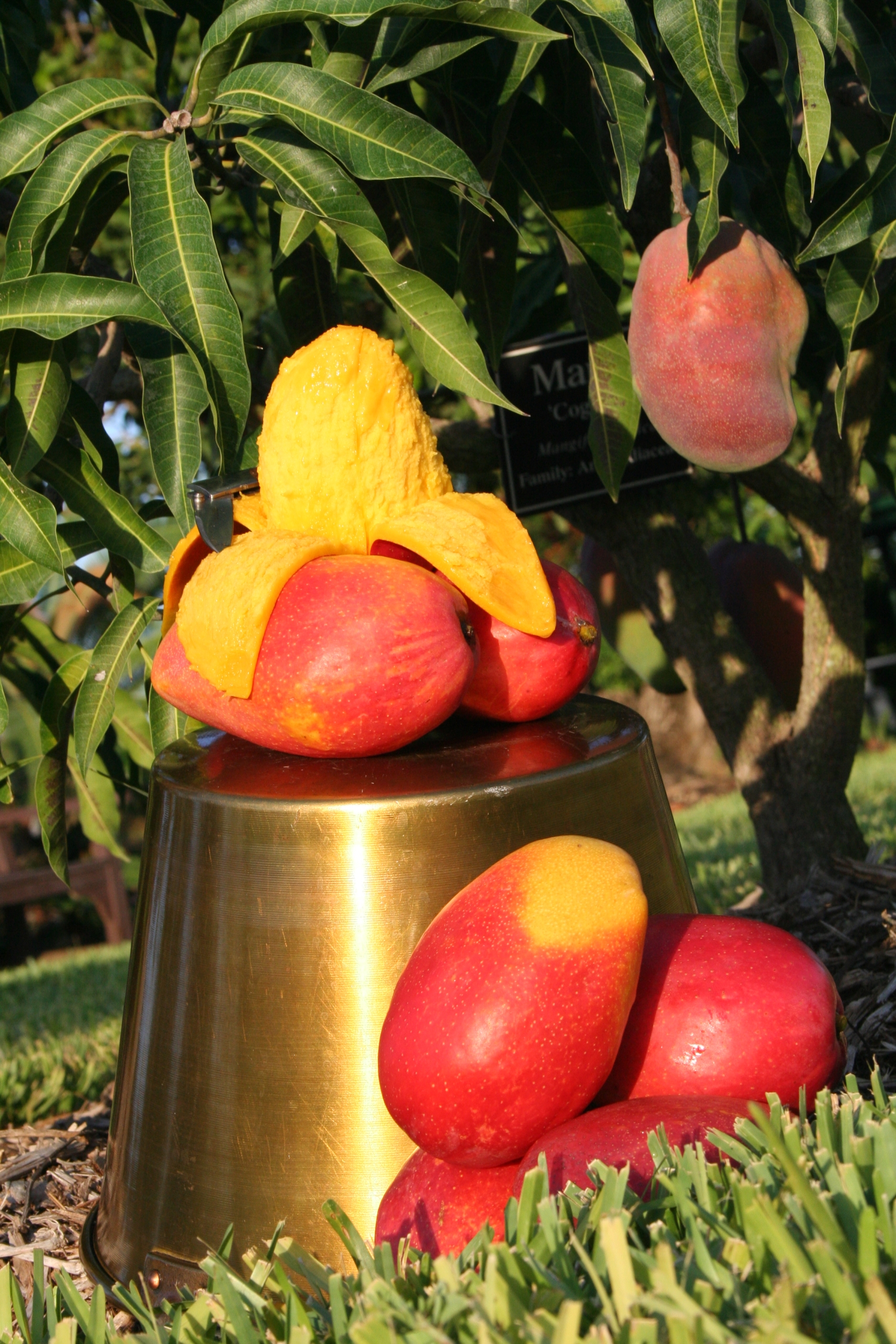The Edible Mango Garden

Edible gardening in South Florida is not really about tomatoes and peppers. Certainly, we have a few months where we can have an impact in the vegetable arena, but we are ultimately at the mercy of our tropical weather.
Yet, we are pushed by the media and by our friends from the north, so we buy and we plant…we buy and we plant…and we buy and we plant. In the end, we are sure that we are bad growers or that our changing climate makes it impossible to vegetable garden here in South Florida.
But fear not South Florida edible gardener, for your salvation hangs from the limbs and boughs of our most loyal friends. Of course, I am speaking of the mango and her cast of tropical fruit associates.
Drive around town in the late spring and early summer and admire the fruit trees. The mango, avocado, sapodilla and jackfruit stand strong against the summer sun, flaunting their pendulous fruit. The very sight provides for our edification and affords the gardener within each of us a most powerful and simple pleasure. These are the sights meant to please, and we are drawn to them—led into an edible Garden of Eden, as in the days of old. The fruit tree is the star, the temptress of Eden—and the mango is the most provocative of them all.
“Why mango,” you ask? The answer is as obvious as a stroll around your neighborhood. The mangos hang from your neighbors’ trees, from trees in empty lots and dusty rights-of-way. The mango thrives where no vegetable dare go. Mangos grow among the rocks and rubble, in the infertile sands and in the most verdant estates. The fruit thrives on the abject neglect of the street, suffering a much worse effect under an overindulgent hand. The mango in the edible garden thrives under the watchful eye of the exacting horticulturist, measuring care so as to provide for the mango’s needs, but withhold excess. The tree flourishes and fruits, and the gardener eats a hearty meal by his or her own hand.
There is a mango for all tastes, all likes and uses. The mango can be used as a vegetable, as a fresh fruit or for preserves. It can be sweet or savory, mild or spicy. It is both a fruit of the aristocracy and the people, certainly achieving much more than the zucchini. No, the mango is king and projects its personality onto the garden and its owner. We can choose among the dozens of available cultivars to meet our needs. Southeast Asian, Indian, Brazilian or Jamaican, they are all represented.
Get Info About the 2025 Mango Festival at Fairchild in Miami!

Every imaginable color and texture is available, allowing one to uniquely mold the garden into a personal statement. The only question is: “What does your mango garden say about you?”
The ‘Angie,’ ‘Julie,’ ‘Fairchild,’ ‘Cogshall,’ ‘Mallika’ and ‘Nam Doc Mai’ are just a few varietals that every edible garden should boast, but the list is long and there are no wrong answers. It is here in the mango garden that you can toss aside your inhibitions and bring in anything from the bold and sassy to the reserved and elegant. Even availability in a commercial nursery is not a requisite. Take a class or two and practice a bit, and your horizon will widen to include hundreds of mangos from around the world. Go forth and multiply your mangos and the edible garden. Plant them in the spring, enjoy them in the summer, prune and care for them during the fall and respect them always.
This article was written by Richard Campbell, Ph.D., and originally published in the Summer 2015 issue of the Tropical Garden. Minor changes from the print version of this article were introduced to improve readability in a digital format.
